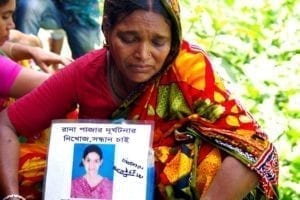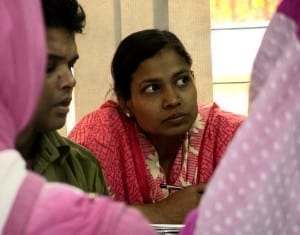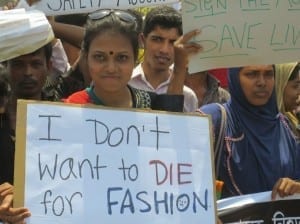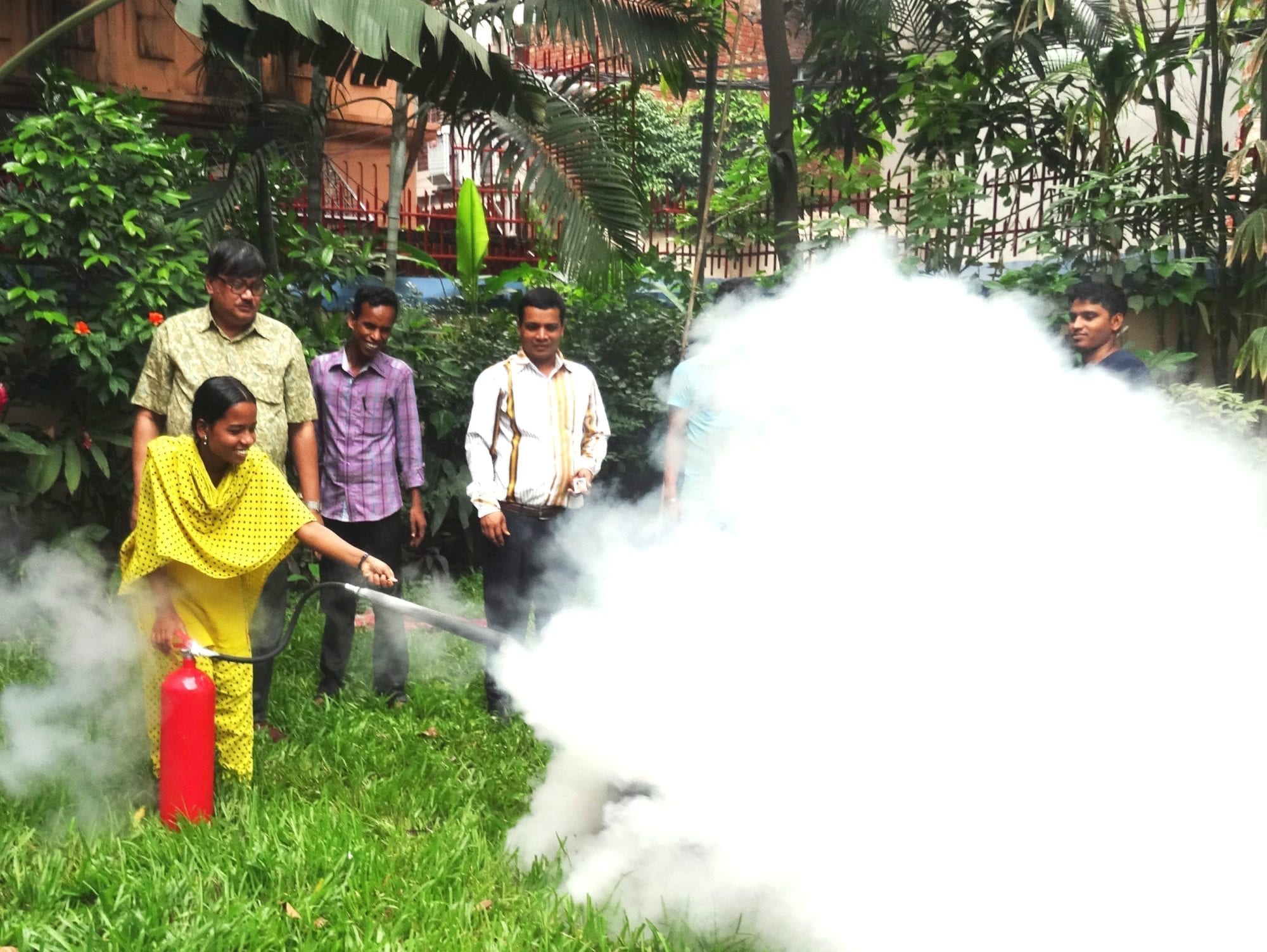Six years ago, the preventable Rana Plaza collapse in Bangladesh killed 1,134 garment workers in the world’s worst garment industry disaster. Corporate greed, inadequate labor and building code enforcement, and worker exploitation all contributed to the April 24, 2013, tragedy, which spurred efforts to improve factory safety and support workers seeking a voice on the job.

Nurunnahar mourns the loss of her daughter who died in the Rana Plaza collapse. Credit: Solidarity Center/Balmi Chisim
Many survivors still face unemployment and poverty because they are too injured to work, according to an Action Aid survey. Months before Rana Plaza collapsed, a fire at Tazreen Fashions factory killed more than 112 workers, part of a pattern of dangerous conditions and deadly risks garments workers face each day in Bangladesh.
Following Rana Plaza, Bangladesh has seen important international and domestic efforts to address fire and building structure risks and improve the labor conditions that hinder workers from reporting dangerous working conditions and violations, and exercising their labor rights. Initiatives like the Bangladesh Accord for Fire and Building Safety, a binding agreement involving fashion brands, unions and the government that helped make many garment factories safer, fueled a rise in union organizing.
And through worker education, like the Solidarity Center’s Fire and Building Safety program, garment workers are boosting their capacity to identify safety and health problems at the workplace and learn about their right to join together to ensure safe workplaces by taking collective action to resolve problems.
6,000 Garment Workers in Solidarity Center Fire Safety Trainings
More than 6,000 Bangladesh garment workers have participated in Solidarity Center safety programs in recent years, including Shilpi Akter, who has worked in the garment industry for more than 10 years.

Some 6,000 Bangladesh garment workers have taken part in Solidarity Center fire safety trainings. Credit: Solidarity Center/Balmi Chisim
“Before the Rana Plaza incident, there were no sprinklers, fire doors or emergency lights in our factory,” she says. “I had no idea what fire or health and safety at work meant, neither did we have any trade unions or safety committees.
“Through Solidarity Center’s fire safety training, I learned how to use a fire extinguisher, how to be safe from the fumes during a fire accident, and that I must not keep the clothes I stitch near the heated motor of the machine. This knowledge was unknown to me even a few years back.”
Bilkis Begum, a garment worker and a union president, says before Rana Plaza, “we handled the toxic chemicals without any precaution and had no idea on what to do in case of a fire accident except to run.”
Mohammed Ronju paints the incident more starkly. “There would be no Rana Plaza if it had a union,”’ says Ronju, who has worked in the garment industry for 15 years. If workers had a union, they “would not go inside the building when they sensed trouble. They would have strongly resisted the pressure from management to go inside a building about to collapse.” The day before the Rana Plaza disaster, building engineers declared the structure unsafe. Yet managers threatened to withhold wages if workers did not show up for work the day Rana Plaza collapsed.
‘No More Rana Plazas’

Each year, tens of thousands of Bangladesh workers rally on the anniversary of the Rana Plaza disaster to demand safe working conditions. Photo: Solidarity Center/Sifat Sharmin Amita
The Rana Plaza tragedy prompted international efforts, through the Accord and other mechanisms, to ensure dangerous garment factories were closed or repaired and safety measures instituted. As a result, factory compliance with fire and building safety codes has improved. Yet much more work remains to be done to ensure full compliance with basic fire and building safety and occupational health standards, and to guarantee enforcement of fundamental labor laws, including workers’ right to form unions.
Since November 2012, at least 1,304 Bangladesh garment workers have been killed and at least 3,877 injured in factory fires and other workplace incidents, according to data compiled by the Solidarity Center.
All the more reason, experts say, the Bangladesh government must not roll back international safety inspections.
Says Bilkis Begum: “Surely, we all would agree that it should never be the case that we could sacrifice another Rana Plaza to complete the remaining task of making the workplace safe for the garment workers of Bangladesh.”

